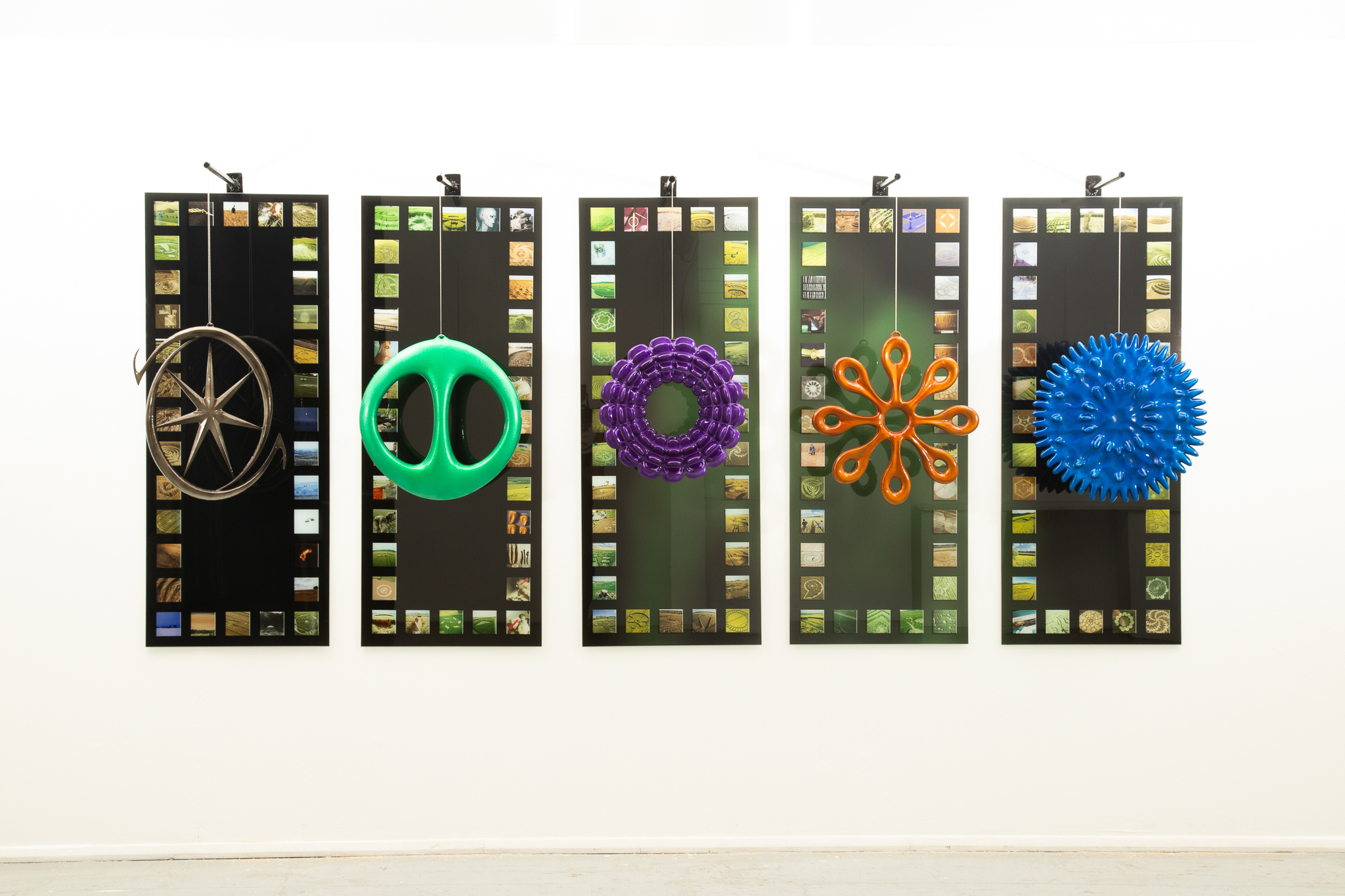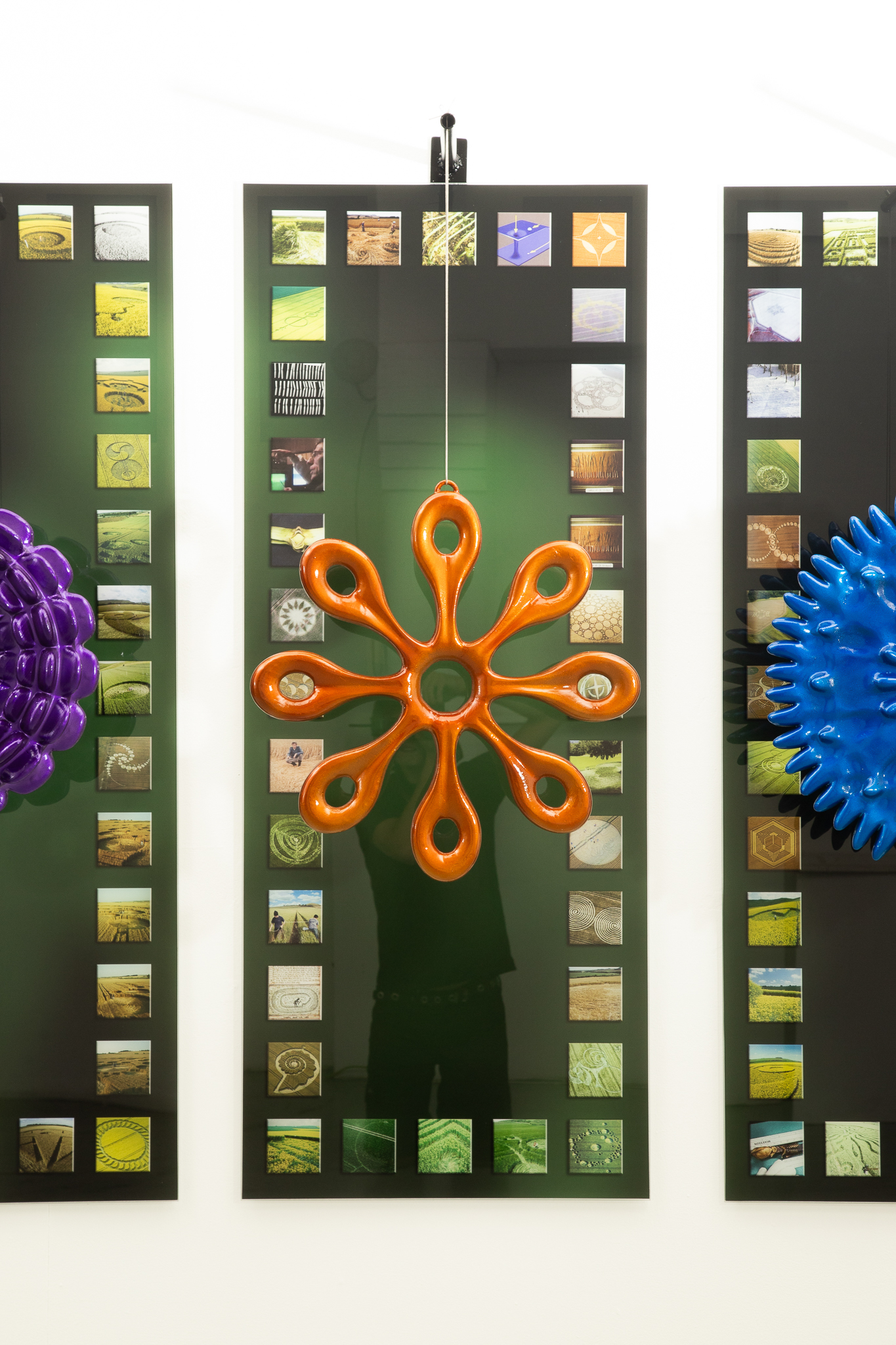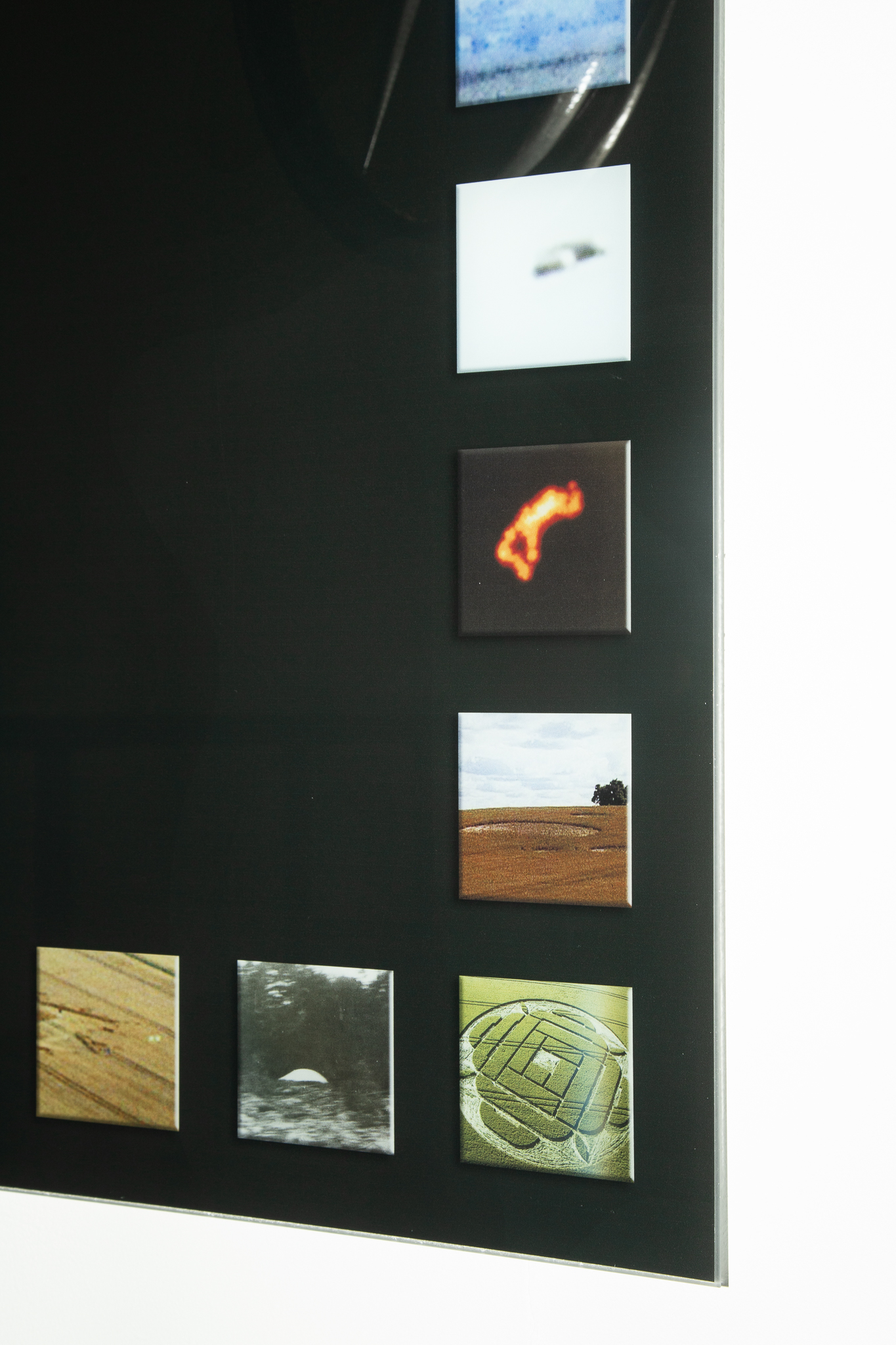His practice investigates the role of technologically-mediated images in creating digital mythologies.
Morphic Resonance
2024
Polylactic acid, resin, automotive paint, hanging wire, steel, glass-mounted digital prints
50 x 135 x 30cm each
Polylactic acid, resin, automotive paint, hanging wire, steel, glass-mounted digital prints
50 x 135 x 30cm each
Morphic Resonance is a sculptural project inspired by the symbols found in crop circles alongside trance record covers from the 90s and the early 2000s. It consists of five 3D printed sculptures hung in front of glass-mounted prints collating images from crop circle literature and archives.
The project explores the visual and thematic overlap between crop circles and trance album artwork - namely esoteric symbols which promise answers to age-old questions and known unknowns, tapping into an intuitive way of understanding the world around us through visual language. Many such symbols made their way from crop circles to the artworks of trance albums, which, despite being designed over two decades ago, feel inherently futuristic. Perhaps the nostalgia we feel for the sounds and symbols of a past era represents a longing for a time where we were able to be more optimistic about our futures; a future nostalgia.
Our current inability to imagine alternative futures leads us to glamourise what has come before: a feeling of “being born in the wrong generation”. The present seems unfixable, so instead we fantasise about eras gone by. This manifests itself in a fetish for outdated technology - the analogue nature of vinyl ties these records to a specific geographic area as well as a moment in time. Pressed on small runs, they are artefacts from a time just before globalisation made subcultures obsolete. Similarly, crop circles tend to appear within specific geographic locations, most famously Wiltshire in South West England. Referencing cymatics, sacred geometry, and other alternative knowledge, the ability to recognise these symbols signifies belonging to a certain in-group, not intended to be mainstream.
Perhaps what both of these symbolise is a yearning for a connection with the local, a subculture with genuine meaning that cannot be appropriated by the mainstream. In a time when even the most niche aesthetics end up on Shein within weeks of gaining traction, we long for a world where some aspects of our lives weren not yet digitised.
The project explores the visual and thematic overlap between crop circles and trance album artwork - namely esoteric symbols which promise answers to age-old questions and known unknowns, tapping into an intuitive way of understanding the world around us through visual language. Many such symbols made their way from crop circles to the artworks of trance albums, which, despite being designed over two decades ago, feel inherently futuristic. Perhaps the nostalgia we feel for the sounds and symbols of a past era represents a longing for a time where we were able to be more optimistic about our futures; a future nostalgia.
Our current inability to imagine alternative futures leads us to glamourise what has come before: a feeling of “being born in the wrong generation”. The present seems unfixable, so instead we fantasise about eras gone by. This manifests itself in a fetish for outdated technology - the analogue nature of vinyl ties these records to a specific geographic area as well as a moment in time. Pressed on small runs, they are artefacts from a time just before globalisation made subcultures obsolete. Similarly, crop circles tend to appear within specific geographic locations, most famously Wiltshire in South West England. Referencing cymatics, sacred geometry, and other alternative knowledge, the ability to recognise these symbols signifies belonging to a certain in-group, not intended to be mainstream.
Perhaps what both of these symbolise is a yearning for a connection with the local, a subculture with genuine meaning that cannot be appropriated by the mainstream. In a time when even the most niche aesthetics end up on Shein within weeks of gaining traction, we long for a world where some aspects of our lives weren not yet digitised.















